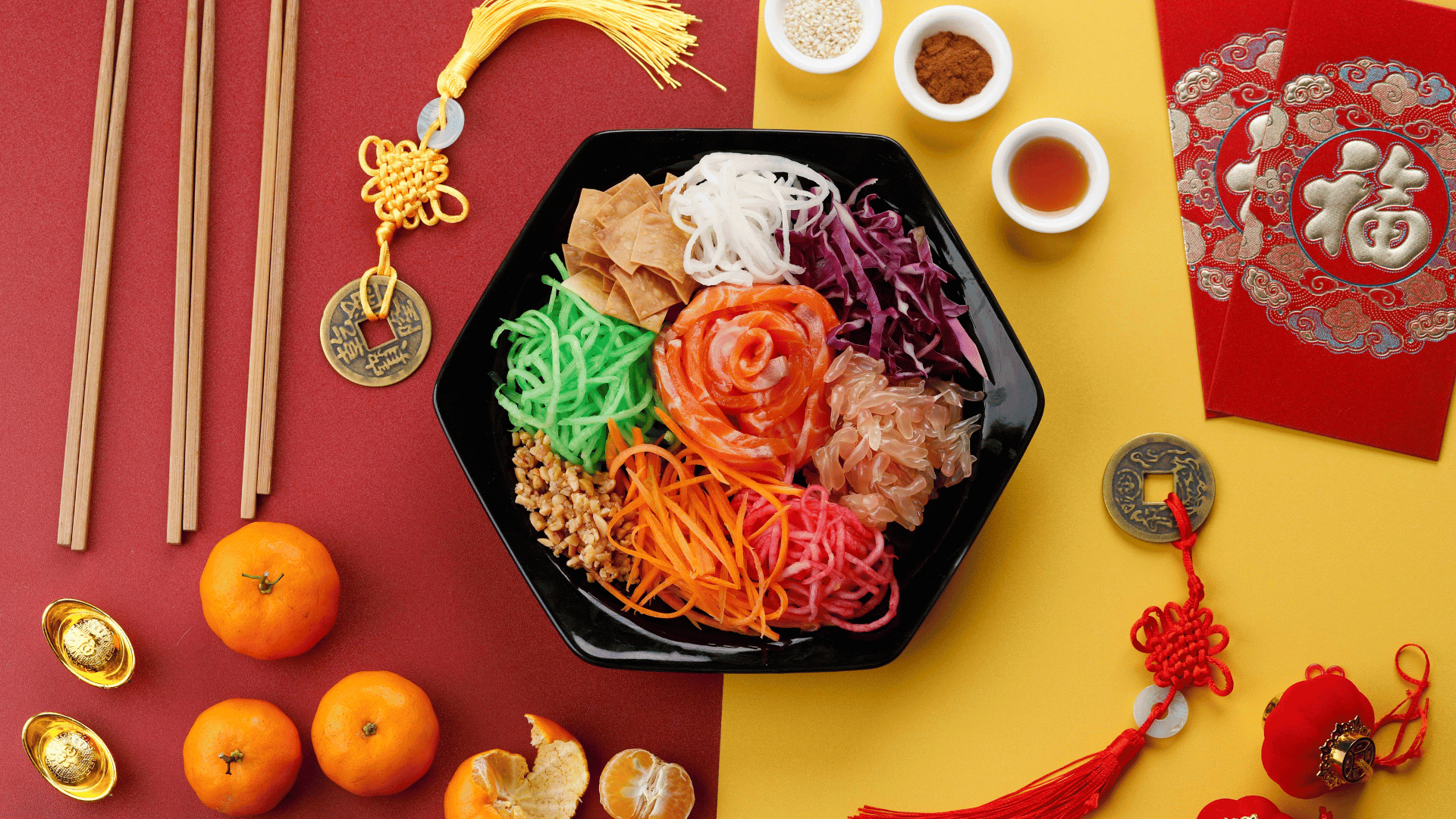Families should join together to celebrate the Lunar New Year, which is observed in various Asian nations and is better remembered for said Chinese New Year celebration, also known as the Spring Festival. It is for this reason that Chinese and Vietnamese relatives gather for a "reunion supper" or food to prepare for the Chinese New Year. It's also imperative to serve a wide variety of food. Filipinos are known to participate in the festival by eating Chinese food, contacting Feng Shui specialists for good luck, and examining their Chinese horoscope. This is one example of the way the Chinese culture in the Country has been recognized as having a significant influence on the nation.
The traditional Asian cuisine served at the event comes in a variety of shapes and flavors, and many of the meals have symbolic meanings, folklore, and superstitions attached to them, such as lucky food Chinese new year. A Lunar New Year feast includes both sweet and savory foods, as well as meat and vegetarian options. It's usual to present cuisine to the host at parties, so if you're attending and celebrating the New Year gathering this Year, amaze your guest by providing some of these foods.
Make sure to include a few of these auspicious Chinese new year food recipes as well as some mainstays in your festivities this Year. Seeking good luck and preventing bad luck for the upcoming Year is a prominent theme for each and every Lunar New Year.
The celebration begins on January 22 and lasts for two weeks, concluding with the Lantern Festival in 2023. The calendar and an animal from the Chinese zodiac line up every Year. The Year for the Rabbit, a fortunate animal that personifies grace and beauty, is 2023. We are happy to explain 7 of the lucky food for the New Year 2023 consumed during this period of Year and to share a few of our quick and simple recipes with you in order to assist you in understanding how to properly welcome the Rabbit Year.
With that, let's start our little lesson on Chinese New Year's food and significance!
Dumplings. One of the famous lucky food for the New Year 2023 is dumplings. They are sometimes referred to it as mandoo by Korean, gyoza in Japan, or jiozi in Mandarin Chinese, are delectable savory bites that are frequently offered at Chinese New Year celebrations. They could be filled with an endless variety of ingredients, such as chicken and cabbage, greens and egg, and pork and chives. Dumplings are considered to be associated with money and to bring success and luck, so chow down!
Noodles. Chinese New Year food recipes wouldn't be complete without Noodles or also known as "longevity noodles." These Lunar New Year noodles, also known as "longevity noodles" or "longevity noodles," can reach a length of two meters and are offered uncut, whether fried or drenched in soup. In some regions of China, they are referred to as chángshu miàn. The longer the noodles you eat, more longer you'll live, goes the urban legend.
Fish. Another food to prepare in Chinese New Year, according to Kho is Fish, during Lunar/Chinese New Year and is presented in a variety of ways at almost every meal. This is an example of two words that have different characters but the same pronunciation. The word "fish" is pronounced similarly to the word "leftover" in Chinese and many other dialects, according to Kho. "The concept is that you desire a food surplus or wealth every Year in order to have it left for the following Year.
Glutinous Rice Cake or Tikoy. The sweet form of year cake, which is more indigenous to southern China, is baked with sugar and may be given as a present for great luck for the New Year. It is frequently wrapped in newspaper and frequently consumed on Chinese New Year's eve. According to Kho, the savory variety is commonly stir-fried in dishes at cuisine and northern Chinese restaurants.
Lumpia. Lumpia is a typical lucky food Chinese new year dish made in Indonesia and the Philippines. They are identical to cooked spring rolls seen in Chinese cuisine. These fried rolls, which are said to imitate gold bars, are thought to bring good luck and are frequently stuffed with chicken, cloves, pork, shrimp, carrots, or bean sprouts.
Tangerine. Tangerines are a typical gift and meal during the Lunar New Year because they are reviving, filling, and symbolic. Since the Cantonese term for tangerine and the word for riches sound similar, tangerines are regarded as lucky fruits. Oranges, pomelos, and kumquats are other common fruits said to be lucky for the event due to their gold color, in addition to tangerines.
Fortune Candy. Candy is the final stop on our brief culinary and symbolic tour of the Chinese New Year. Before you call the pediatric dentist on the fast dial, keep in mind that Chinese culture doesn't necessarily associate sugar with tooth decay.
The New Year's Eve dinner, like Media Noche, is the most significant dinner in Chinese culture since it allows the family to get together and share a meal. In addition, this is one of the occasions when most kitchens are busiest because lucky food is being prepared to bring money and good fortune, as is the case with all Filipino festivities. Filipinos are known to participate in the festival by eating Chinese food, contacting Feng Shui specialists for good luck, and examining their Chinese horoscope. This is one example of the way the Chinese culture in the Country has been recognized as having a significant influence on the nation. Like how Red is regarded as the luckiest hue in Chinese culture because it brings luck and riches. This explains why, during Chinese New Year, the majority of people wear red clothing from head to toe and decorate their homes with crimson paper lanterns—to ward off evil spirits.
One of the reasons the nation is affected not only in business and commerce but also in political, social, and cultural facets is the early arrival and growth of the Chinese population over time. This also illustrates why the Chinese New Year came to be one of the important holidays that many Filipinos continue to observe today.
For more information on Vista Residences, email info@vistaresidences.com.ph, follow @VistaResidencesOfficial on Facebook, Twitter, Instagram, and YouTube, or call the Marketing Office at 0999 886 4262 / 0917 582 5167.

_11zon.jpg)
_11zon.jpg)
_11zon.jpg)
_11zon.jpg)
_11zon.jpg)
_11zon.jpg)
_11zon.jpg)









